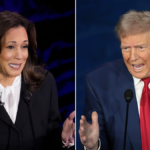US Top News and Analysis
The rally to record stock market highs and the launch of new bitcoin funds gave the first half of 2024 notable milestones for the ETF industry. The second half brings hurdles that hurt the odds of a repeat performance. The best-performing ETFs in the second half will likely be decided by broader shifts in the markets and economy. Wall Street is waiting to see when the Federal Reserve starts to cut interest rates amid signs that economic growth is already starting to falter. “The biggest visible risk to this rally is if the Fed stays too restrictive for too long,” said Michael Arone, chief investment strategist for the U.S. SPDR Business at State Street Global Advisors. Even with mounting uncertainty, however, there are some types of ETFs that could emerge as winners. Equities A handful of stocks were big winners in the first half, and some narrowly-focused ETFs were able to ride that wave. Assets in the Roundhill Magnificent 7 ETF (MAGS) , for example, have grown to more than $500 million. Single-stock funds tied to Nvidia have also seen heavy interest, including the GraniteShares 2x Long Nvidia ETF (NVDL) . MAGS YTD mountain The success of megacap tech stocks has been a key story in this market rally, including among ETFs. The Magnificent 7 ETF is up more than 40% in 2024. Strategists at top ETF firms aren’t calling for investors to completely move away from these giant stocks, but do suggest finding ways to dilute the exposure. “We want to have exposure there but so many portfolios already have massive exposure to the Mag 7, or it has now become the Fab 5,” Arone said. “Ultimately, we’re encouraging them to think that other companies beyond those will also benefit from the tremendous investments that companies across sectors and industries are making in artificial intelligence. I guess in some ways we are hoping to have our cake and eat it too.” ETF firms have struggled to find AI-themed ETF funds that worked, but there are options to give investors exposure to companies in that space without loading up on only Nvidia and Microsoft. For example, the SPDR NYSE Technology ETF (XNTK) currently has Nvidia as its largest holding, but at only around 5% of the entire fund. The fund is equal weighted at its annual rebalance. Jay Jacobs, U.S. head of thematic and active ETFs at Blackrock’s iShares unit, is also bullish on AI-related funds as part of his mid-year outlook. “In the short-term, we believe two mega forces, in particular, have the potential to reshape the global economy and could reach critical inflection points: 1) the transformative potential of artificial intelligence (AI) and its catalyzation of a historic cycle of capital expenditure; and 2) the growing impact of geopolitics on trade and technology amid a wave of elections globally,” Jacobs wrote. The stock funds highlighted by iShares include the firm’s own U.S. Digital Infrastructure and Real Estate ETF (IDGT) and the U.S. Tech Independence Focused ETF (IETC) . Fixed income Bond funds have been a growth area for the ETF industry, particularly actively-managed ones like BlackRock’s Flexible Income ETF (BINC) and Pimco’s Multisector Bond Active ETF (PYLD) . But the new offerings have not made much of a dent in the cash sitting on the sidelines, according to Todd Sohn, ETF strategist at Strategas. “While we’re bullish on the prospects for Fixed Income ETF growth, we’re amazed to see that retail money market AUM has now surpassed the combined AUM of retail mutual fund + ETF products – it took the 2008 Financial Crisis to occur for the last observation. 5% cash [yields are] certainly helpful, but we tend to wonder if investors might be overlooking opportunities in other areas, whether equity or bonds,” Sohn wrote in a July 2 note to clients. With the timing and extent of the Fed’s rate cuts still unclear, investors should be cautious about trying to capture interest rate moves, Arone said. “So many investors continue to be obsessed with the notion of extending duration to take advantage of falling rates, and I think they underrate just how volatile and risky that has been,” Arone said. Arone suggested that investors instead look at adding real assets like gold or floating rate exposure. Top bank loan funds include the SPDR Blackstone Senior Loan ETF (SRLN) or First Trust’s Senior Loan Fund (FTSL) . New launches The biggest fund launch of the first half came with the new bitcoin funds in January. Those funds have raked in more than $14 billion of net flows year to date, according to FactSet, and are still seeing demand. Next up is ether ETFs , which industry experts expect to be approved later this month. Matt Hougan, chief investment officer at Bitwise Asset Management, projects ether ETFs will end up as less than one-third the size of bitcoin ETFs, based on the market size of ether and examples from other countries. Still, Hougan predicted $15 billion of net flows over the first 18 months for ETH funds, which would make it one of the most successful new categories of fund on record. Another wrinkle to the ETH funds is that they don’t allow for staking , a process that some crypto investors use to generate extra yield from ether and other cryptocurrencies. However, Hougan said he didn’t think that omission would be a big hurdle for ETF investors. “I think ETFs are just solving a problem for traditional investors, and if they can get 99% of the way there, they’re going to get there,” Hougan said.
Author Profile
Latest entries
 ScienceSeptember 16, 2024There’s a surprising link between body temp and animal diets
ScienceSeptember 16, 2024There’s a surprising link between body temp and animal diets HeadlinesSeptember 16, 202457 days: Kamala Harris has yet to do formal press conference since emerging as Democratic nominee
HeadlinesSeptember 16, 202457 days: Kamala Harris has yet to do formal press conference since emerging as Democratic nominee ScienceSeptember 16, 2024Super flexible probes more accurately record brain activity
ScienceSeptember 16, 2024Super flexible probes more accurately record brain activity HeadlinesSeptember 16, 2024Lawmakers request briefing with Secret Service on second attempted assassination on Trump
HeadlinesSeptember 16, 2024Lawmakers request briefing with Secret Service on second attempted assassination on Trump
